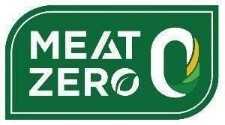Two recent trademark dispute decisions, Paris Bar v Bar Paris and ZERO MEAT v MEAT ZERO, provide valuable insights into how the European Union Intellectual Property Office (EUIPO) and the European General Court (EGC) assess similarity, distinctiveness, and the likelihood of confusion between trademarks. These cases highlight the complexities involved in trademark disputes and illustrate the fine lines that can determine the outcome of such cases.
Bar Paris v Paris Bar (T-117/23)
 v
v ![]()
Background
On June 28, 2019, Superstudio 21 GmbH filed an application for the European Union trademark registration of the sign for foodstuffs and restaurant services. Kantstraße Paris Bar GmbH opposed the registraton based on its earlier German trademark, which covered similar services. Initially, the EUIPO’s Opposition Division upheld the opposition, but this decision was later annulled by the EUIPO’s Board of Appeal (BoA), leading to the General Court’s final decision.
Court Findings
The General Court focused on the descriptive nature of the word elements ‘Paris Bar’ and ‘Bar Paris’, given their association with Parisian culture and gastronomy. Despite their arrangement, these elements were considered lowly distinctive. The inclusion of a Gallic rooster as a figurative element in the contested trademark was deemed as distinctive and dominant as the word elements. However, the court ruled that there was only a low degree of visual similarity on account of the inversed order of the words, a high degree of phonetic similarity, and a limited conceptual impact due to the generic nature of the words.
The Court confirmed the Board of Appeal’s finding that the inherent distinctiveness of the earlier mark is very low. The opponent’s claim of increased distinctiveness due to intensive use was rejected because of insufficient evidence relating to one single bar in Berlin.
Ultimately, the General Court ruled out the likelihood of confusion based on the visual perception of the trademarks, which it considered predominant in the context of buying foodstuffs and visiting restaurant. This decision emphasizes the importance of visual differences in distinguishing trademarks, especially when the word elements are considered generic or descriptive.
ZERO MEAT v MEAT ZERO (R 2052/2023-2)
v
Background
On september 29, 2021, CPF Food and Beverage Co., Ltd. applied for registration of the ‘ZERO MEAT’ trademark for meat substitutes, which was opposed by Norma based on their earlier ‘MEAT ZERO’ trademark. The opposition was initially upheld due to a likelihood of confusion, but the decision was overturned by the Board of Appeal.
Board of Appeal’s decision
The BoA found that the words ‘zero’ and ‘meat’ are basic English terms understood across the European Union, thus possessing low distinctiveness. The arrangement of these words and the inclusion of a numeral and color differences in the trademarks contributed to their overall impression, which the BoA found distinct enough to avoid confusion. Indeed, the different layout and color shades were significant enough to differentiate the trademarks in the market.
Finally, both trademarks referred to meat-free products and an environmentally friendly ethos, yet this was not enough to confuse the average consumer due to the non-distinctive nature of the descriptive words used.
Conclusion
The decisions in both Paris Bar v Bar Paris and ZERO MEAT v MEAT ZERO underline the importance of the distinctiveness of the elements that compose a trademark in determining the likelihood of confusion. These cases demonstrate that non-distinctive or descriptive elements afford a limited scope of protection, which is a crucial consideration for businesses when developing brand identifiers.
Finally, these decisions which do not appear to be in line with the case of the Court of Justice of the European Union might encourage a reevaluation of the CJEU’s approach regarding the weight given to the distinctiveness of earlier trademarks.


